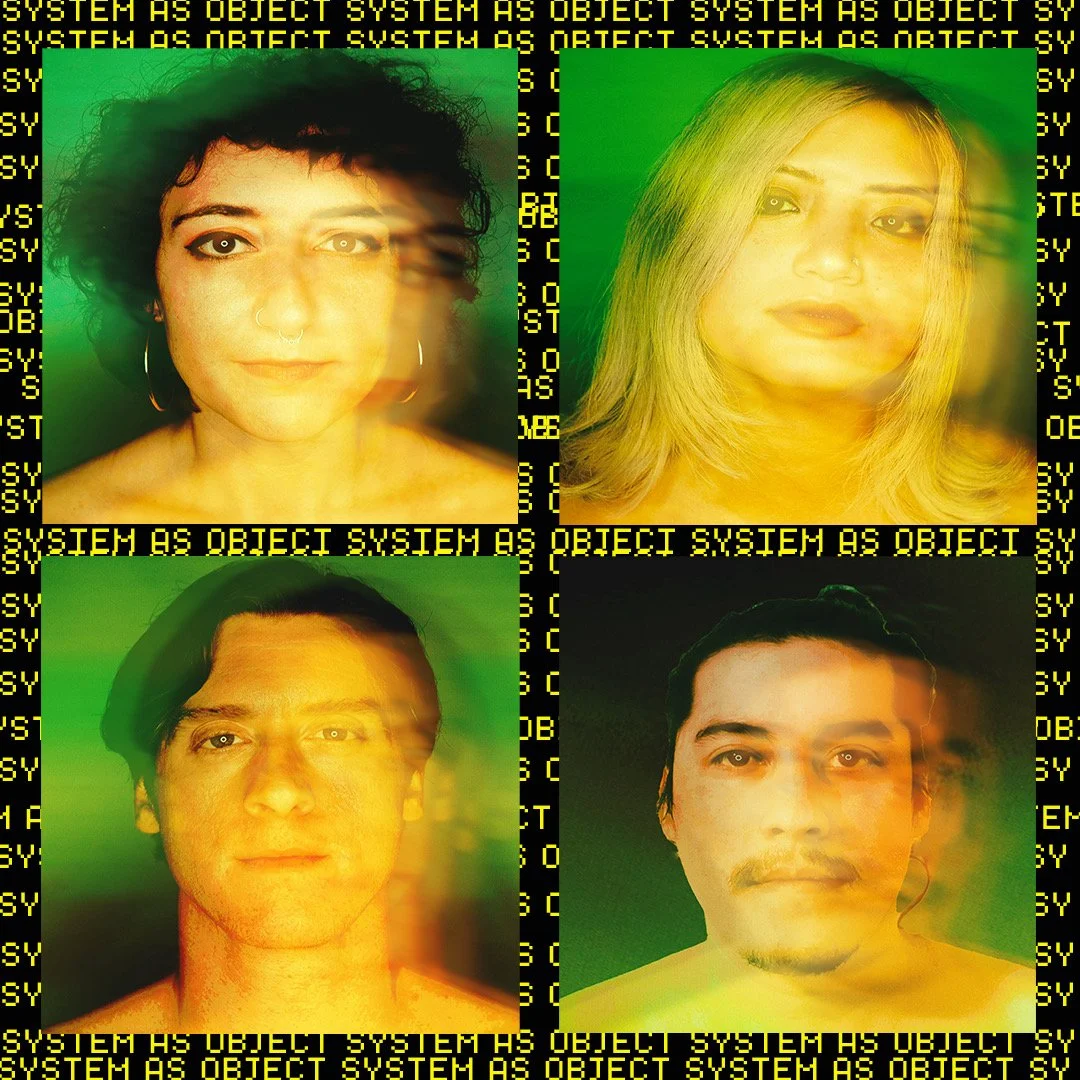SYSTEM AS OBJECT
System as Object is a complex emergent entity that slowly generates and replaces its parts over the course of a month. While the system may appear to blur the boundaries between interior and exterior, digital and real, the room contains it’s whole self, and is irreducible to it’s parts. Independent of intervention, the object transforms on its own timelines, both perceptible and imperceptible, demonstrated by various forms of audible and visual decay over this iteration of its existence. It’s development in this activation is dependent on its specific location and the time it’s been allowed. The object is not knowable by the sounds it generates or by it’s technological components, but can only be suggested indirectly by those qualities.
System as Object was installed at Oregon Contemporary Art Center in Portland, OR from February 25 through March 20, 2022 and was be open to the public during our open hours. The installation opened with an activation performance and closed with a deactivation performance by Crystal Cortez and Francisco Botello.
The installation itself consisted of a 16 speaker algorithmically decaying soundscape, physical artifacts designed by Qu in various rates of decay including food, plastic and wood, and ever-morphing projections mapped to the walls of the space.
Created by Portland-based sound/installation artist Crystal Cortez (aka Quartez), sound/intermedia artist Francisco Botello, audio/visual artist Benjamin Johnson, and AAPI multi-disciplinary artist General QU, this installation functions as a site-specific, generative, and regenerative entity, transforming itself without any outside intervention. Auditory and visual decomposition will occur over the entity's one-month lifespan. System as Object will conclude with a final performance and deactivation.
This work was sponsored by Third Angle New Music
{~~~~}
Review of Installation by Ruben Dario:
Systems as Object
“From chaos, milieus and rhythms are born.” – Deleuze & Guattari
Systems as Objects can be considered an installation, but also much more. It’s a space that’s synthesized into reality with the information that’s given. It is an ongoing process of becoming, where every instant its body of sound and matter is different yet it is still always itself. It’s a piece of art that asks to be framed rather than imposing one. In a sense, the frame is the lived experience of the viewer/listener in the installation –what variation the System is at the moment and how it’s perceived.
Is this any different than how we view ourselves as humans? The concept of Transindividuation, which I very vaguely interpolated in the last paragraph, can be way of interpreting what Systems as Objects is and how it’s mode of being is very similar to how nature natures: A selection in chance, a resonance of probabilities that individuates itself from an apparent chaos, a sense of recognition that is only asserted in the relation between others, a striving to be.
The System started from a plan; a pool of shared information, intentions, and possibilities from four different artists (Benjamin, Crystal, Francisco and Qu) that it would use as its visible body of image and sound. In its physical sense it takes shape as a room, a designed space of see-through furniture and fast-food bouquets. Its walls show projections of different self-generating processes. One week it can be creating new geometries or the next it’s molding different faces through random trait selections.
Sonically, the field recordings take snapshots of varying places and synthesize them in a new space. Signs of the city life, nature, or of the mundane world, get recoded into a new identity; the System’s expressions. A systematized chance like performance takes places, where a slice of sound from a wave plays in between traffic noises while bird songs cross the room cut by heavy machinery. The System chooses how and when the samples are going to be played –how it’s going to express itself. It perpetuates itself through time like every living thing, even when a decaying command was applied to its code during the second half of its allotted time.
The reflection here is to grasp identity as something more expansive; in how it shifts through time and it’s constantly being recreated in its internal and external interactions. This could also be a way of understanding expansive concepts like Global Warming, which is expressed sporadically in tangible ways that keeps defying its comprehension. In this sense, System as Objects problematizes the question of identity from different magnitudes, and in various modes of reality (conceptual identity, personal identity, group identity, object identity, etc.)
At any rate, the experience of Systems as Objects works as a door to infinite questions, potentials and lines of thought–not just the one I followed above. It’s a space that never seems to exhaust its dimensions; where you can sit down and be transported to so many places or by walking around it you cross through different fabrics of transposed realities.
All it asks is for it to be experienced.
